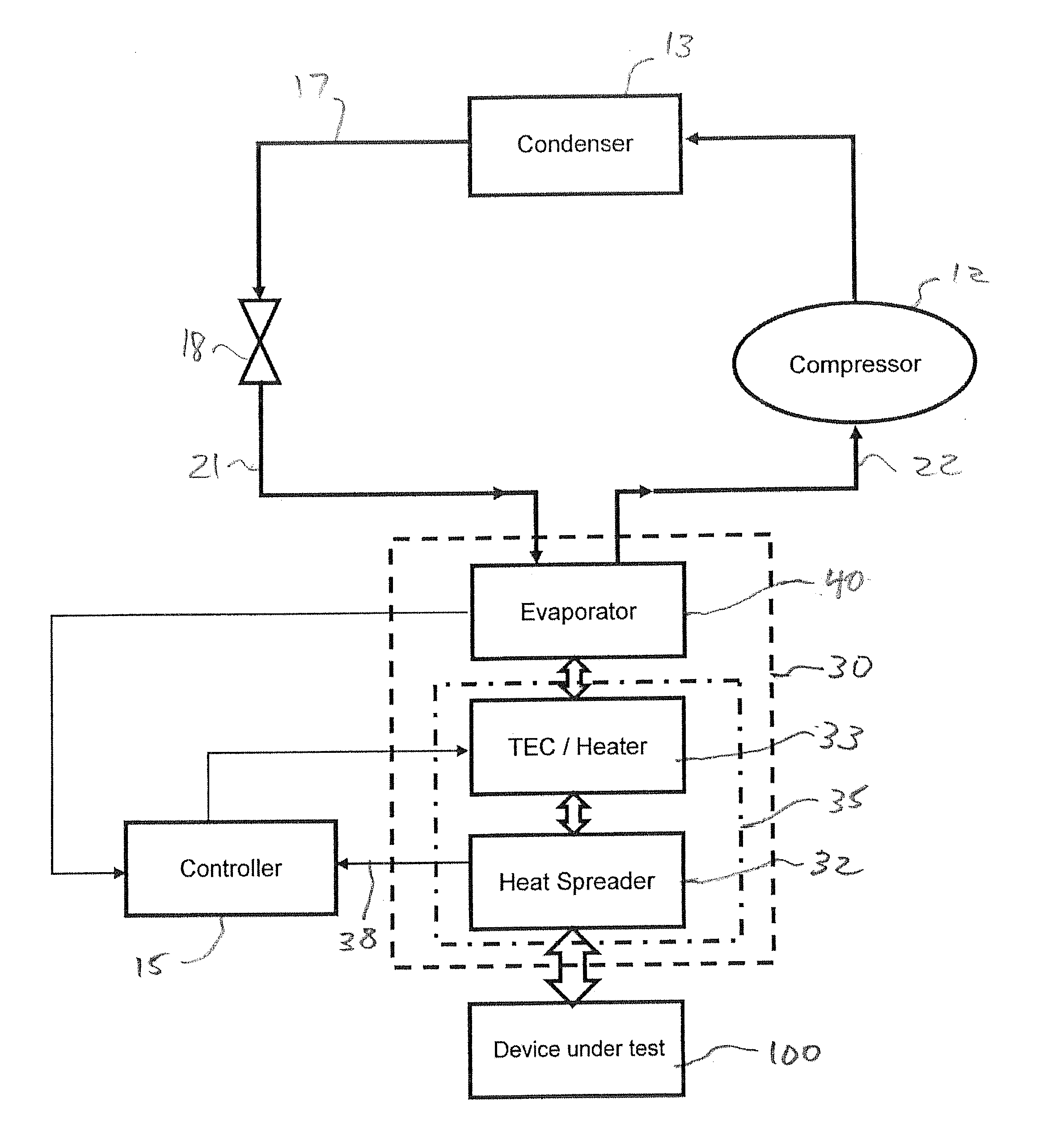Efficient temperature forcing of semiconductor devices under test
a technology of temperature forcing and semiconductor devices, applied in the field of temperature forcing of semiconductor chips and modules, can solve the problems of insufficient temperature raising of the casing, large cumulative temperature differential, and exothermic process of the dut, and achieve the effect of improving the temperature forcing process, reducing device temperature, and increasing thermal efficiency
- Summary
- Abstract
- Description
- Claims
- Application Information
AI Technical Summary
Benefits of technology
Problems solved by technology
Method used
Image
Examples
Embodiment Construction
[0044]Reference is made to both FIG. 1, which shows a temperature-forcing system according to the invention schematically in block diagram manner, and FIG. 2A, which depicts in an isometric view, a particular embodiment of the system. The system is generally configured and operative to circulate a bi-phase refrigerant through a temperature-forcing head (thermal head).
[0045]A central unit 10, usually with an enclosing case (not shown), has a compressor 12, a condenser 13, in intimate thermal contact with and an atmospheric heat exchanger and an expansion valve 18. A pipe (not shown) connects the outlet of compressor 12 with the inlet of condenser 13 and another pipe 17 connects the outlet of condenser 13 to the inlet of expansion valve 18. The heat exchanger is in thermal communication with the atmosphere, aided by a fan 14. Also within the central unit 10 is a controller 15, in electrical communication with a control panel 16.
[0046]A tube assembly 20, preferably flexible, connects c...
PUM
 Login to View More
Login to View More Abstract
Description
Claims
Application Information
 Login to View More
Login to View More - R&D
- Intellectual Property
- Life Sciences
- Materials
- Tech Scout
- Unparalleled Data Quality
- Higher Quality Content
- 60% Fewer Hallucinations
Browse by: Latest US Patents, China's latest patents, Technical Efficacy Thesaurus, Application Domain, Technology Topic, Popular Technical Reports.
© 2025 PatSnap. All rights reserved.Legal|Privacy policy|Modern Slavery Act Transparency Statement|Sitemap|About US| Contact US: help@patsnap.com



